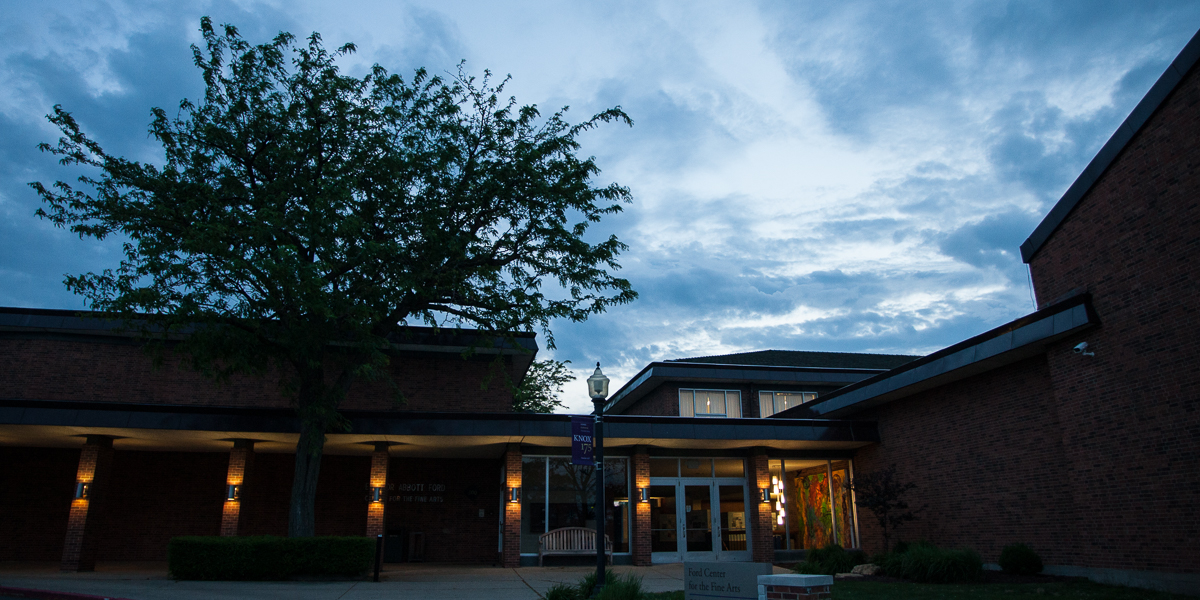Knox Stories
Repertory Theatre Term Performs 20th Season
The 2025 season marked the 20th Repertory Theatre Term season at Knox College
Venture Boldly

Office of Communications
2 East South Street
Galesburg, IL 61401


Over the next year, Knox students and faculty from multiple departments will collaborate in the reconstruction and preservation of a 55-foot whale skeleton. The skeleton will be on permanent display in the renovated core of the Umbeck Science-Math Center (SMC) on the Knox College campus when it opens during winter term of 2020.
The whale came to Knox from New Hampshire through the efforts of Nick Gidmark, assistant professor of biology. Gidmark, who spends summers teaching at Shoals Marine Lab in Maine, has procured dolphins and other aquatic mammal skeletons for his anatomy students at Knox. When he learned that the renovated SMC atrium was going to be a two-story, 75-foot-long space, he realized that he had the opportunity to bring a larger specimen to the campus.
The skeleton he procured for the College is a 55-foot-long fin whale, the second-largest mammal (after blue whales) on earth. The whale was killed by a ship strike in 2012. The Seacoast Science Center in New Hampshire collected and cleaned the flesh from the whale, which then sat exposed to the elements at the center because there wasn't room indoors for a specimen of that size.
"I contacted the science center and told them that I'd like to procure the whale," says Gidmark. "They said no."
He went back to the center, informing them of Knox's mission of access. "We have so many first-generation students, and we have this great, diverse student body and people from all kinds of places and cultures," says Gidmark. "So many of them haven't had the chance to see anything anywhere close to this kind of magnitude."
After about a month, says Gidmark, "They decided to pass it on to us because we were going to make great use of this incredible specimen."
This summer, Gidmark brought the whale skeleton to Knox. It now resides in a basement lab in the biology wing of SMC.
During
Some finger bones and the pelvic bones are missing, and a few other bones are damaged to the point that they cannot be repaired. Replicas will need to be either 3D printed or sculpted.
During winter term, students will use toothbrushes to begin the tedious work of removing algae, dirt, and other debris from the bones. Andrea Ferrigno, assistant professor of art, has been researching materials used for skeletal cleaning and repairs. Because the bones have been exposed to the elements, they have become porous and fragile. "Using the right materials will be critical for the longevity of this project," says Ferrigno.
Because the specimen will hang in the new atrium and will be exposed to light, the glue and binding materials were selected according to these conditions. "The materials we will be using are the same used for large animal skeletal repairs in the Smithsonian," she explains.
Once the bones are clean and dry, they will be stabilized by injecting or painting on a resin binding agent. "The next step of my research will be investigating materials to make repairs sturdy, seamless, and convincing."
Ferrigno will utilize art students to help with all aspects of the cleaning, stabilizing, and repair process. "This is an incredible opportunity for students to gain hands-on experience working with conservation and restoration practices," she says.
In addition to biology and art students and faculty, the Department of Theatre will also be involved with the project. "I have always wondered who got to make the creative choices about how to light dinosaur reconstructions and things like that," says Craig Choma, associate professor of theatre. "It is akin to architectural lighting in that the goal of the lighting on an object like the whale skeleton is to help reveal form through embracing light and shadow."
Choma plans to bring a few of his top lighting design students on board. "Having the unique experience of learning how to light a whale specimen will be an opportunity to use our design skills in a completely fresh and different way."
Gidmark sees the multidisciplinary nature of the whale project as being emblematic of a Knox education. "There are opportunities here that you don't necessarily predict or know are going to happen. But Knox builds so much intentional flexibility into everything, that students can go capture whatever it is that they want to experience."
"I hope this whale can be a celebration of that experience."



Pictured above: Renderings of how the whale skeleton will look when mounted in the atrium of the renovated Umbeck Science-Mathematics Center.
Published on November 19, 2018

 There are only four fin whales on public display in the U.S. that are not within 100 miles of a coast.
There are only four fin whales on public display in the U.S. that are not within 100 miles of a coast.